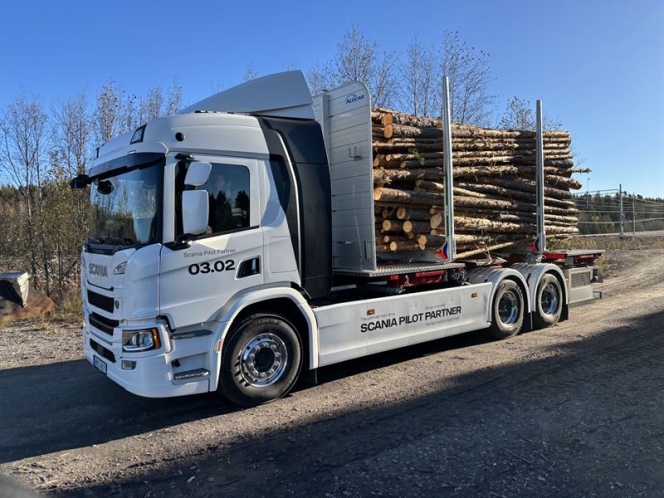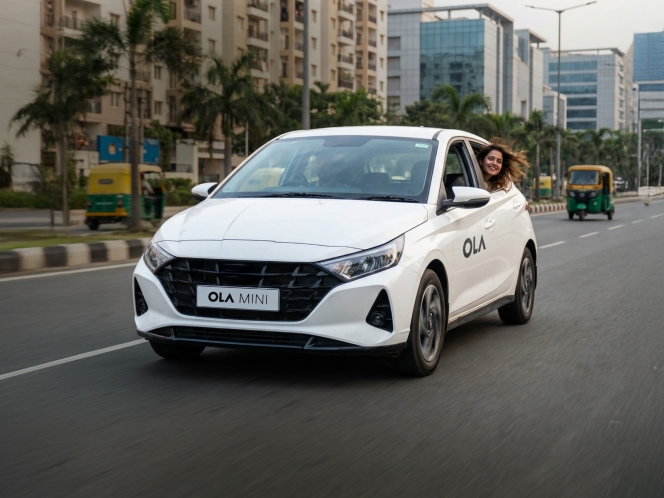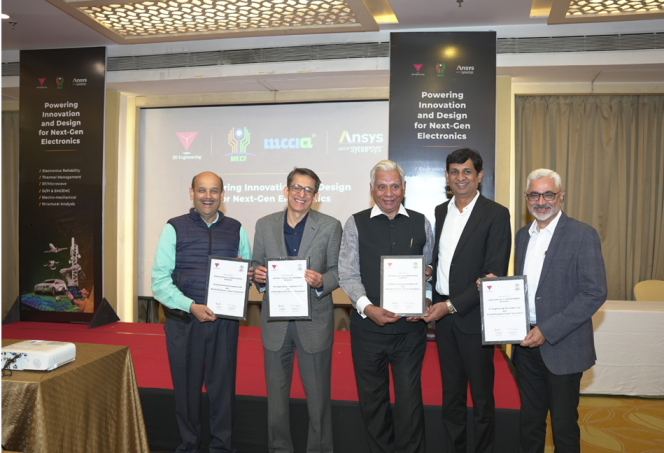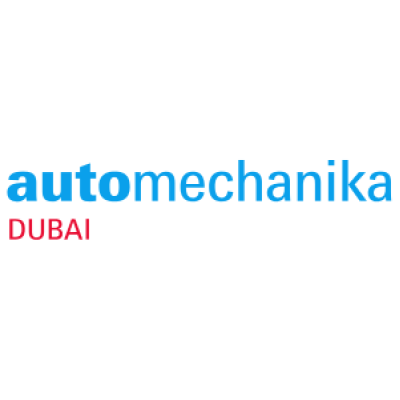Zebra Technologies Releases Findings From Automotive Ecosystem Vision Study
- By MT News
- February 14, 2023

Zebra Technologies Corporation released the findings of its Automotive Ecosystem Vision Study. The study aimed to gauge industry views, priorities and expectations the industry faces, and the challenges and opportunities resulting from rapid digital transformation. All data was collected and tabulated by third-party research firm, Azure Knowledge Corporation.
The study confirmed automotive manufacturers are under pressure to accommodate growing consumers’ preference for electric vehicles (EVs) in the near future. Automotive manufacturers must plan for a smooth transition to EVs, which have a very different requirements from raw materials to final assembly. Technology-led priorities will therefore be focused on increasing automation, building in-house technologies and expanding visibility across their respective production and supply chains.
The survey was conducted from August to September 2022, with participation from 1,336 respondents globally, including industry decision-makers, fleet managers and consumers. In APAC, the 350 respondents were surveyed across India, Greater China, Japan and South Korea.
APAC consumers, including India respondents, will prefer purchasing EVs in the future
The survey reflects that in the near future there will be a shift in preference, with more than half of consumers (53 percent globally, 60 percent in APAC, including India) indicating going for a hybrid electric vehicle (HEV). However, navigating this increasing demand for EVs comes with challenges as 68 percent of global automotive industry decision-makers (60 percent in APAC, including India) say they are under high pressure to produce next generation (electric) vehicles, while 75 percent of them (71 percent in APAC, including India) are under high pressure to deliver products that are more eco-friendly, sustainable and safer for the environment.
The study also highlights consumers across generations pushing automotive manufacturers’ acceleration to technology innovation as eight in ten say that sustainability and eco-friendliness are key priorities in their vehicle purchase and lease decisions. 87 percent of millennials prioritise sustainability in their vehicles followed closely by 78 percent of Gen Xers and 76 percent of baby boomers. Within APAC, 85 percent of consumers were aligned with these key priorities, consisting of 92 percent of millennials, 83 percent of Gen Xers and 72 percent of baby boomers prioritising sustainability the highest.
Consumers are driving the growing emphasis on personalisation – the ability to customise a vehicle to their liking. Nearly four in five consumers say personalisation options factor into their decision to purchase a vehicle, and eight in ten fleet managers share these same requirements for sustainability and personalisation. APAC consumers resonate with this most strongly when compared with their global counterparts, with 86 percent prioritising personalisation options in their purchasing decisions, and 92 percent of fleet managers sharing the same requirements.
While nearly 80 percent of automotive industry decision-makers globally (77 percent in APAC, including India) recognise consumers expect more sustainable and personalised vehicle options today, around seven in ten concede it’s difficult to keep up with increasing customisation demands. As a result, three in four automotive manufacturers globally say a top priority is to build strategic partnerships with tech companies for their next generation of production. This number is lower across APAC, at 72 percent and 64 percent respectively.
Tan Aik Jin, Vertical Solutions Marketing Lead APAC, Zebra Technologies, said, “The challenges that automotive manufacturers face today include finding and retaining qualified workforce, navigating supply chain disruptions, delivering on heightened expectations around speed and accuracy. While it’s heartening that consumers are leaning towards a greener automotive future with greater preference towards electric vehicles, this is a signal to automotive decision-makers to actively invest more in safer technologies and robust infrastructure, to better serve their customers.”
Trust and transparency in automotive manufacturing
Data and information transparency is highly important to consumers and fleet managers alike, and they are seeking more visibility into the automotive ecosystem. When considering a vehicle for purchase or lease, 81 percent of consumers globally (85 percent in APAC, including India) and 86 percent of fleet managers (92 percent in APAC, including India) indicate they want to understand the origin of materials and parts on their vehicle. Millennials lead the way in demanding more transparency in automotive manufacturing, as more than eight in ten (both globally and in APAC, including India) say it is important to have access to manufacturer information along with knowing if source materials and parts are sustainable and understanding how the vehicle is manufactured from end-to-end.
Beyond gaining greater visibility into the automotive manufacturing process, once they have their vehicles, 88 percent of consumers (82 percent in APAC, including India) and 86 percent of fleet managers (88 percent in APAC, including India) want to understand how the data from their vehicles will be used by the automotive ecosystem.
After a vehicle purchase, 83 percent of consumers and 84 percent of fleet managers expect ownership and control of the data their vehicle generates. This sentiment is similarly shared within APAC, by 86 percent of consumers and 88 percent of fleet managers.
Automotive supply chain visibility
A majority of consumers (79 percent globally, 83 percent in APAC, including India) and fleet managers (81 percent globally, 84 percent in APAC, including India) want end-to-end visibility during the manufacturing process. However, only around three in ten automotive industry decision-makers say they will prioritise connecting real-time data systems (30 percent in APAC, including India) to enable a holistic view of operations and increase visibility across production and throughout the supply chain over the next five years (32 percent in APAC, including India).
Jin added, “To provide real-time visibility throughout the supply chain, digitising operations via RFID and rugged handheld mobile computers can ensure that both regulations and sustainability expectations are met effectively and efficiently.”
Slightly more than one-third of OEMs globally and in APAC said autonomous mobile robots (AMRs), RFID, rugged handheld mobile computers and scanners as well as industrial machine vision will improve supply chain management. Similarly for suppliers, one-third of those surveyed cite mobile barcode label/thermal printers, wearable computers and location technology as the technologies to do so.
Rajnish Gupta, Vice President and Head – India and Sub-Continent Business, Zebra Technologies, said, “Manufacturers are innovating to meet changing customer demands, and they are increasing their investment in technologies to deliver more personalised and sustainable vehicles. Along with this, they also need to ramp up their end-to-end supply chain visibility to build the next level of trust with their customers. We are ready to help automotive manufacturers enhance their operational capabilities through digitalisation through varying solutions like the L10ax rugged tablet, RFD90 ultra-rugged UHF RFID sleds, MC9300 DPM mobile computer and Workforce Connect, just to name a few.”
Overall, around seven in ten automotive industry decision-makers (76 percent globally, 67 percent in APAC, including India) agree that digital transformation is a strategic priority for their organisation. In the next five years, they anticipate expanding their use of technology, with 47 percent (both globally and in APAC, including India) focused on additive manufacturing/3D printing and 45 percent globally (46 percent in APAC, including India) on supply chain planning solutions.
- Scania
- Horse Powertrain
- SCA
- hybrid truck
- Aurobay Technologies
- Matias Giannini
- Tony Sandberg
- Ingo Scholten
Scania Selects Horse Powertrain For Range-Extender Truck Pilot In Sweden
- By MT Bureau
- December 03, 2025

Horse Powertrain has been selected by Scania to provide its range-extender system for a pilot vehicle, currently operating as a heavy-duty timber truck in Sweden. The collaboration is a step in testing hybrid powertrain solutions for demanding transport applications such as forestry logistics.
The pilot is part of the Scania Pilot Partner program and is currently operating in Sweden under SCA, one of Europe’s forestry companies.
The vehicle is built to handle Sweden’s timber routes, transporting heavy loads through remote terrain where access to charging infrastructure remains scarce. By combining a battery-electric drivetrain with the generator designed in Sweden by Horse Powertrain’s division Aurobay Technologies, the truck achieves both long-distance capability and reduced CO2 emissions.
The test route covers approximately 16 km, with an operational target of completing 7–8 rounds per day, comparable to a diesel truck.
The configuration supports the truck’s battery packs with a 120 kW range-extender unit based on Horse Powertrain’s 2.0 litre multi-fuel engine. Acting purely as an onboard charger, the unit supplies electric energy when required during long hauls, temperature extremes, or delays.
Matias Giannini, CEO, Horse Powertrain, said, "Forestry logistics represents one of the toughest challenges for electrification. The forest roads of northern Sweden demand strength, range and reliability. Charging stations are few, but the timber never waits. You can think of our range-extender as a powerbank for a heavy-duty truck: silent, efficient, and always there when you need it. By partnering with Scania and drawing on our engineering excellence, we’re proving how a compact, high-efficiency range-extender enables electric trucks to operate reliably in the most demanding environments. It’s a technology that cuts CO2 now.”
Tony Sandberg, Vice-President at Scania Pilot Partner, added, "What we’re doing in Sweden with Horse Powertrain and SCA builds directly on the 100-day trial we ran together with a logistics partner in Germany earlier this year. That vehicle logged almost 22,000 kilometres and drove more than 90 percent of the time on pure electric power, only using the range-extender when no charging was available. The result was a CO2 reduction of over 90 percent compared with a diesel truck. Those learnings give us a strong foundation as we tailor the system for demanding Nordic timber operations."
Ingo Scholten, Chief Technology Officer, Horse Powertrain and Managing Director Sweden, Aurobay Technologies division, said, “Electrifying heavy-duty routes means understanding what drivers and operators face hour by hour. Long stretches without charging, variable loads and rapidly changing weather. This pilot lets us study those realities directly in day-to-day timber operations. The range-extender’s role is simple. Provide a stable, efficient energy supply so drivers can complete their full shift without interruption and with far lower greenhouse-gas emissions than a traditional diesel truck. The data we gather here will guide how we refine the technology and scale it for wider use across demanding transport applications.”
Horse Powertrain’s modular range-extender architecture builds on the core technology used in its passenger-car and light-commercial hybrid systems, adapted for the higher power output and durability demands of heavy-duty applications. Unlike conventional fixed-speed generator sets, the engine can operate across its full power band, allowing the system to deliver the required output efficiently while keeping fuel consumption, noise and vibration low.
The pilot truck is now undergoing testing in regular operations, carrying full timber loads to gather performance and efficiency data in real-world conditions. The results will guide future deployments of electrified powertrains in the forestry sector and other heavy-duty applications.
Maruti Suzuki Launches One India, One EV Charging Platform
- By MT Bureau
- December 03, 2025
Maruti Suzuki India, the country’s largest passenger vehicle maker, is gearing up to mark its entry into the electric vehicle segment with the soon-to-be-introduced e Vitara has announced an EV ecosystem with a comprehensive end-to-end digital platform for charging needs, including home and public charging, with an integrated payment journey.
The company has signed collaboration agreements with 13 Charge Point Operators (CPOs) and aggregators to provide seamless charging experiences on a single platform.
Maruti Suzuki has established a network of over 2,000 exclusive charging points across its nationwide dealer network, spanning more than 1,100 cities. Customers’ charging needs are further supported by the extensive partner-operated all-India charging network.
Aligned with its global vision, Maruti Suzuki will work with its partners to enable more than 100,000 Public Charging Points by 2030.
Hisashi Takeuchi, Managing Director & CEO, Maruti Suzuki India, said, “At Maruti Suzuki, we strive to extend a delightful ownership experience to our customers to build lasting trust. Today, we are taking a historic step, as we enter the domain of electric mobility with full readiness to address the EV charging concerns and boost customer confidence. We have established a robust network of over 2,000 Maruti Suzuki exclusive charging points across our sales and service network, spanning more than 1,100 cities. Further, we have collaborated with 13 Charge Point Operators to offer access to a vast charging infrastructure across the country. Aligned with Suzuki’s global vision, we plan to introduce multiple EVs and to support this, our aim is to enable a network of over 1 lakh charging points across India by 2030, along with our Dealer and CPO partners.”
'E for Me' Digital Platform
The Maruti Suzuki ‘e for me’ EV charging mobile app enables end-to-end usage of EV charging points from partner-operated charging points and Maruti Suzuki’s own network on a single platform.
The app offers a uniform customer journey for EV charging and payment through UPI or exclusive ‘Maruti Suzuki Money’, powered by Razorpay.
The platform's functions include:
- Locate, Pay & Use EV charging points available on the app.
- Use Public and Smart Home Charger from the same app.
- One card for ‘Tap N Charge’ functionality at Maruti Suzuki dealer outlets and home charger.
- Mirror e for me app on the infotainment system for seamless in-car EV charging experience.
- Remotely start/stop and manage the power output of the smart home charger.
Partho Banerjee, Senior Executive Officer, Marketing & Sales, Maruti Suzuki India, said, “Today is the dawn of a new era for electric mobility in India. It gives me immense pleasure to say that Maruti Suzuki is EV ready and will be ‘By Your Side’ with our comprehensive new platform that addresses key concerns around EV charging infrastructure. Leveraging India’s largest dealer network and our charging partners’ network, we are ensuring there are EV charging points at an average distance of 5-10 kilometres at key locations in the top 100 cities of India. DC fast chargers are also located at regular intervals along key highways to enable nationwide driving freedom for our prospective EV customers. To further enhance peace of mind, we have deployed a 1.5 lakh-strong specially-trained EV workforce to cater to every need of our customers. We have also activated 1500+ EV-ready service workshops across 1100 cities for meeting after-sales requirements to support EV ownership in every part of the country.”
To showcase the network readiness, four e VITARAs were flagged off from Gurugram in all four directions – Srinagar (North), Kanyakumari (South), Bhuj (West) and Dibrugarh (East) – as a part of the ‘e drive’.
The e Vitara Born EV, which is ‘Made-in-India and exported around the world,’ has been rigorously tested over 10 million test kilometres. Tested from ‘Sand to Snow’ over a temperature spectrum of 60deg Celsius to -30deg Celsius, the e Vitara has delivered a driving range of 543 km.
Banerjee added: “Words aside, we are showcasing the prowess of this platform by flagging off a radical ‘e drive’ that will demonstrate the real-world efficacy of Maruti Suzuki’s comprehensive EV charging network. With the ‘e drive’, we aim to boost user confidence and execute faster EV adoption, working alongside the nation’s sustainability goals for net zero.”
Ola Intros Non-AC Cab Options On Its Platform Across India
- By MT Bureau
- December 02, 2025

Bengaluru-based ride-hailing company Ola Consumer has launched its non-AC ride category across India, becoming the only player in the country to offer this option at scale.
The company stated that the goal is to offer customers maximum choice across various price points to meet their travel needs. The new category will also enable cab drivers to have lower fuel consumption and improve their earnings.
Ola Consumer spokesperson said: “With the non-AC category, we’re pushing the boundaries of how affordable and accessible urban mobility can be in India. Millions of people rely on daily, value-driven transport, and this offering is built entirely around their needs. The early response has been incredible and shows how strongly India wants more transparent, flexible, and fairly priced mobility. This move marks a step ahead in our mission to rethink mobility in India, and make it truly inclusive for every consumer.”
- Synopsys
- 3D Engineering
- Ansys
- MCCIA Electronic Cluster Foundation
- MECF
- Mike Yeager
- Murali Pullela
- Shrikrishna Gadgil
- Ajay Deshkar
Synopsys And 3D Engineering Open Design Center In Pune
- By MT Bureau
- December 02, 2025

Synopsys, in association with 3D Engineering (an Ansys Elite Channel Partner), has inaugurated a new Design Center for Engineering Simulation at the MCCIA Electronic Cluster Foundation (MECF) in Pune.
The facility aims to accelerate access to advanced simulation technologies for MSMEs and be a catalyst for industrial R&D in Tier 2 and Tier 3 cities, industry-academia collaboration and student training.
The Design Center will enhance simulation-led innovation and adoption in electronic product design engineering for MSMEs in automotive, aerospace and defence, electronics and healthcare.
The facility will provide hands-on access to engineering tools in structural analysis, thermal modelling, electromagnetics and digital twin technologies. It is equipped with licensed Ansys (now part of Synopsys) simulation platforms and a high-performance computing (HPC) infrastructure.
The MECF facility is one of the Common Facility Centers (CFCs) approved by the Ministry of Electronics and Information Technology (MeitY), valued at INR 710 million. MECF is promoted by the Mahratta Chamber of Commerce, Industries and Agriculture (MCCIA).
This initiative aligns with India's goals under 'Make in India' and 'Skill India' by enabling simulation-led R&D, accelerating time-to-market for local manufacturing innovations and building a talent pipeline trained in engineering challenges.
It will serve as a dual-purpose hub for skill development and industry consultancy, offering design, simulation services and hands-on training. It will also bridge the cost and resource gap for smaller enterprises by offering discounted access to design tools and expert support.
Mike Yeager, Area Vice-President, Synopsys, said, “Simulation is a foundation of modern engineering, and we believe in making these powerful tools accessible everywhere in India. Our collaboration with 3D Engineering and MECF, supported by the Ministry of Electronics and Information Technology (MeitY), will empower students, startups, and SMEs to leapfrog into next-generation design and innovation.”
Murali Pullela, Area Sales Director, Synopsys, said, “Our collaboration with MECF reflects the company's commitment to empower innovation from silicon-to-systems. By equipping the design center with advanced engineering tools, India’s electronics ecosystem can be strengthened, accelerating product development aligned with global standards.”
Shrikrishna Gadgil, CEO, MECF, said, “MECF helps the industry in their product development cycle from design to certification, which will support the electronics ecosystem in the region. Our vision is to make the region vibrant with innovation, fostering new products and technologies, and establishing it as a hub for futuristic products and a center of technology excellence. We’re committed to bringing world-class technology and infrastructure closer to grassroots engineering talent. For us, this Design Center by 3D Engineering with Synopsys, as the principal partner is not just an investment in infrastructure, but also an investment in people, capability-building, and future innovation.”
Ajay Deshkar, Managing Partner, 3D Engineering, said, “As a long-standing Ansys Channel Partner, we at 3D Engineering are proud to enable this ecosystem where cutting-edge simulation technology meets local ingenuity. This Design Center is a model for how industry partnerships can meaningfully drive regional innovation and contribute to India’s technological self-reliance.”






Comments (0)
ADD COMMENT